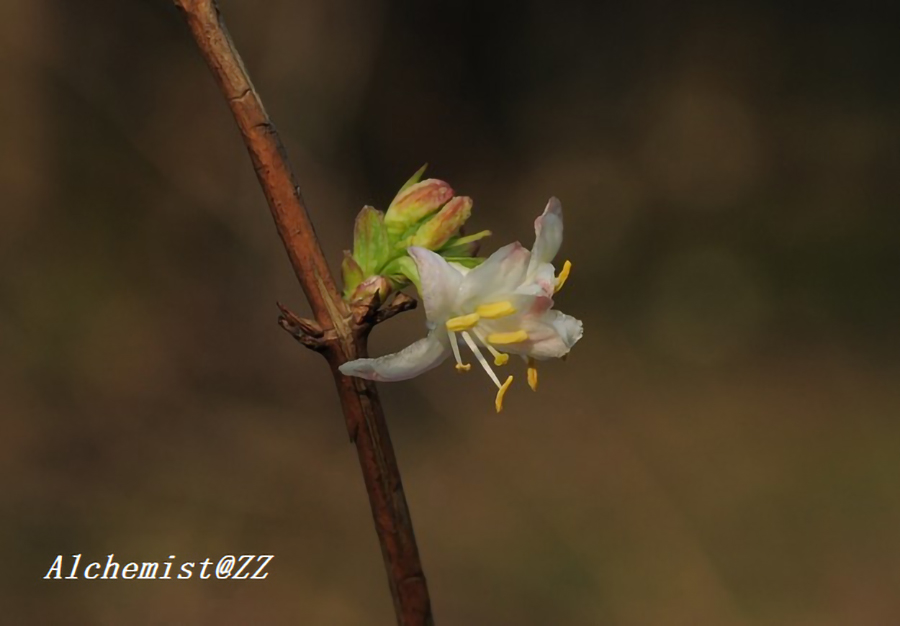- Scientific Name: Lonicera fragrantissima Lindley & Paxton
- Ref: Paxton, Fl. Gard. 3: 75. 1852.
- English Common Name: winter honeysuckle, Chinese honeysuckle, January jasmine
- Chinese Common Name: 郁香忍冬 yùxiāng rěndōng
- Family: Caprifoliaceae
- Genus: Lonicera
- Distribution: Forests, scrub; 100-2700 m. Anhui, Gansu, Guizhou, Hebei, Henan, Hubei, Hunan, Jiangsu, Jiangxi, Shaanxi, Shandong, Shanxi, Sichuan, Zhejiang.
Shrubs, deciduous, to 2 m tall. Winter buds with a pair of acute, cartilaginous outer scales covering membranous inner scales. Young branches usually with reflexed bristles. Petiole 2-5 mm, hirsute; leaf blade sometimes paler abaxially, variable in shape, obovate or ovate to lanceolate, 3-8.5 × 1-4.5 cm, glabrous to pubescent or hirsute, base subcordate to cuneate, margin ciliate or subglabrous, sometimes slightly revolute, apex rounded to acuminate. Inflorescences axillary with paired flowers at base of new shoots; flowers fragrant, opening early in spring; peduncle 1-15 mm, glabrous to hirsute; bracts leaflike to lanceolate, 7-10 mm; bracteoles absent. Paired ovaries fused to middle or above, 1-3 mm. Calyx cupular, truncate or minutely lobed, sometimes ciliate, not constricted at base. Corolla bilabiate, white to pink, 1-1.5 cm, outside glabrous to hirsute; tube 4-5 mm, inside densely puberulent, shallowly gibbous toward base; upper lip ca. 7 mm, lobed to middle; lower lip recurved, ca. 8 mm. Stamens and style exserted from corolla tube; filaments unequal in length. Style glabrous. Berries red, oblong, ca. 1 cm, partly united; seeds brown, slightly compressed, oblong, ca. 3.5 mm, with shallow pits. Fl. Jan-Apr, fr. Apr-Jun. (Flora of China)
